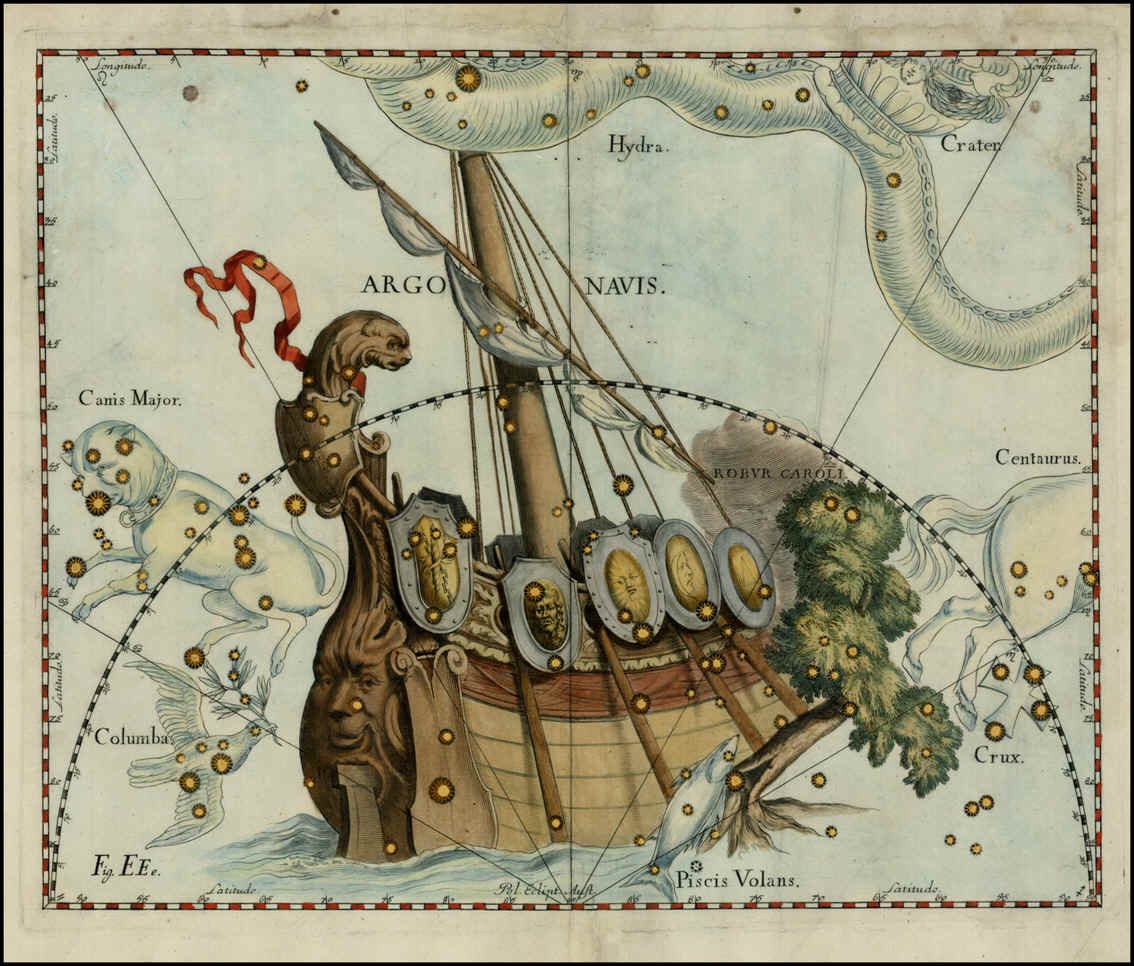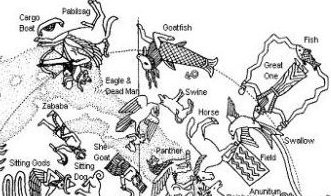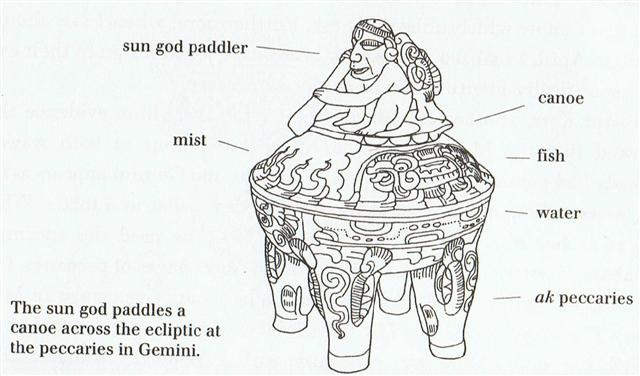125. In Roman times the evening of St John was where the Sun had reached Naos in Argo Navis:
At the time of Bharani (*41), which was *27 - *41 = *14 precessional days earlier, heliacal Naos would have been in "June 10 (probably corresponding to Maro 10 in Manuscript E). ... Midsummer is the flowering season of the oak, which is the tree of endurance and triumph, and like the ash is said to 'court the lightning flash'. Its roots are believed to extend as deep underground as its branches rise in the air - Virgil mentions this - which makes it emblematic of a god whose law runs both in Heaven and in the Underworld ... The month, which takes its name from Juppiter the oak-god, begins on June 10th and ends of July 7th. Midway comes St. John's Day, June 24th, the day on which the oak-king was sacrificially burned alive. The Celtic year was divided into two halves with the second half beginning in July, apparently after a seven-day wake, or funeral feast, in the oak-king's honour ...
After a long Sea voyage Land had finally been reached. The beginning of the voyage of the Explorers had been in Vaitu Nui 25 ("April 25) and this was in day 115 (= 5 * 23). Or counted from the previous solstice, in day 11 + 115 = 126 = 18 * 7 = 2 * 63. Another measure was the distance from Alcyone to Naos, i.e. 11 * 11 - 8 * 8:
And from Naos to Antares the distance was 245 - 117 = 128 days (= 2 * 8 * 8). On side b of the C tablet, we have found the same type of glyph as that at MAY 16 (136) in the G text:
The difference, however, was that in the G text the Eagle (Aquila) was at the Full Moon, whereas in the C text this enigmatic constellation was at the opposite side of the sky, viz. heliacal. MAY 16 (136) + 180 = NOVEMBER 12 (316):
When the Sun Eagle had reached the Full Moon it should have meant that he had made landfall, because the text on side a of the G tablet was basically heliacal. On side b of the C text, on the other hand, Alcyone was at the Full Moon in Cb2-6 (30) with heliacal Altair 91 - 30 = 61 days (glyphs) later:
|
||||||||||||||||||||||||||||||||||||||||||||||||||||||||||||||||||||||||||||||||||||||||||||||||||||||||||||||||||||||||||||||||||||||||||||||||||||||||||||||||||||||||||||||||||||||||||||||||||||||||||||||||||||||||||||||||||||||||||||||||||||||||||||||||||||||||||||||||||||||||||||||||||||||||||||||||||||||||||||||||||||||||||||||||||||||||||||||||||||||||||||||||||||||||||||||||||||||























